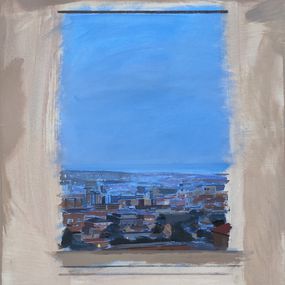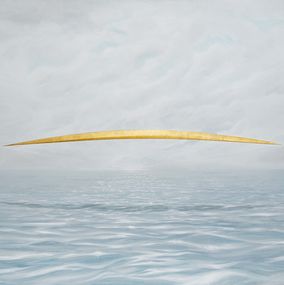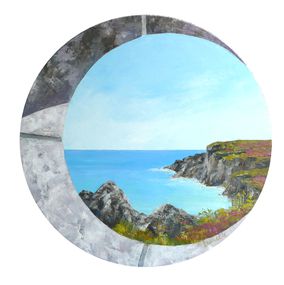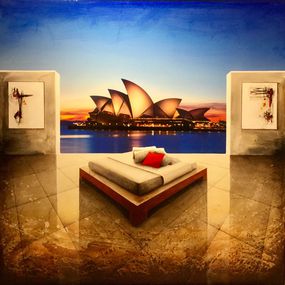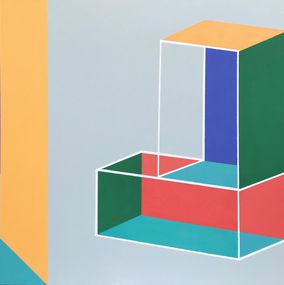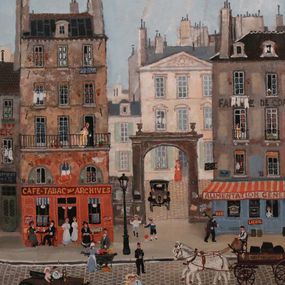
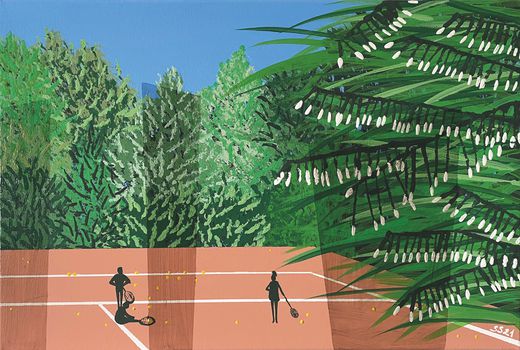
Biography
Sandra Strēle (b. 1991) is a young Latvian painter. In 2016, she graduated from the Art Academy of Latvia with an MA in painting, and studied at the Royal Academy of Fine Arts in Antwerp. A recipient of scholarships of the Boris and Ināra Teterev Foundation (2012), SEB Bank (2016), and Elizabeth Greenshields Foundation (2019, 2021), and a winner of the Brederl von Sengbusch Art Prize (2014). A winner (2019) and finalist (2017, 2018) of the Young Painter Prize competition of the Baltic States. Since 2013, she has been taking part in group exhibitions, workshops and residencies in Latvia, Lithuania, Poland, France, Germany and elsewhere, and held several solo shows in Latvia and Lithuania. Her works are held in the collections of the Lewben Art Foundation and the Lithuanian National Museum of Art.
In her work, Strēle draws on the tradition of landscape and architectural landscape. Her large-size paintings and painting installations represent remote, alienated, lonely spaces and their architectural structures. Sometimes the scenes involve acting figures that seem to participate in various entertainment rituals. The artist is fond of creating narrative cycles of paintings. Each cycle retains some attributes of the previous cycle and at the same time incorporates new elements, bringing out a possibility of change and transformation. Each newly created story is a sequel of the preceding one – it is a kind of TV series whose characters never grow old but are affected by time – by the premonitions of the future, imaginary scenarios of the future, and alongside, by the reflections and memories of the past. The analogy with film series is not accidental. The painter's creative method seems to be based on cinematic logic, when the narrative is developed frame by frame. In Strēle's cycles, one painting follows another, but all of them are subject to time, which seems both real and abstract all at once.
Referring to the idea of the holographic universe, which implies that the three-dimensionality of the universe is actually encoded on the two-dimensional surface, in her paintings the artist layers the planes of the past, the present and the future. Sometimes, small rifts of reality opening amidst these overlapping planes add cultural, social and psychological overtones to the works. Strēle's paintings are characterized by an unexpected structure and an original visual logic, which confuses the viewer's gaze by the discrepancy of different scales, contrasts of precise, rational, free and surreal shapes, complicated perspectives, and manifold intersections of spaces and planes. Her paintings are often marked by the mood of melancholy and nostalgia. The intense emotion of the works is further enhanced by the artist's favourite large format, which allows the viewer to experience the work not only emotionally, but also sensuously, to immerse and get absorbed by the work rather than remain a passive observer.
Nationality
Artistic movements
Themes







